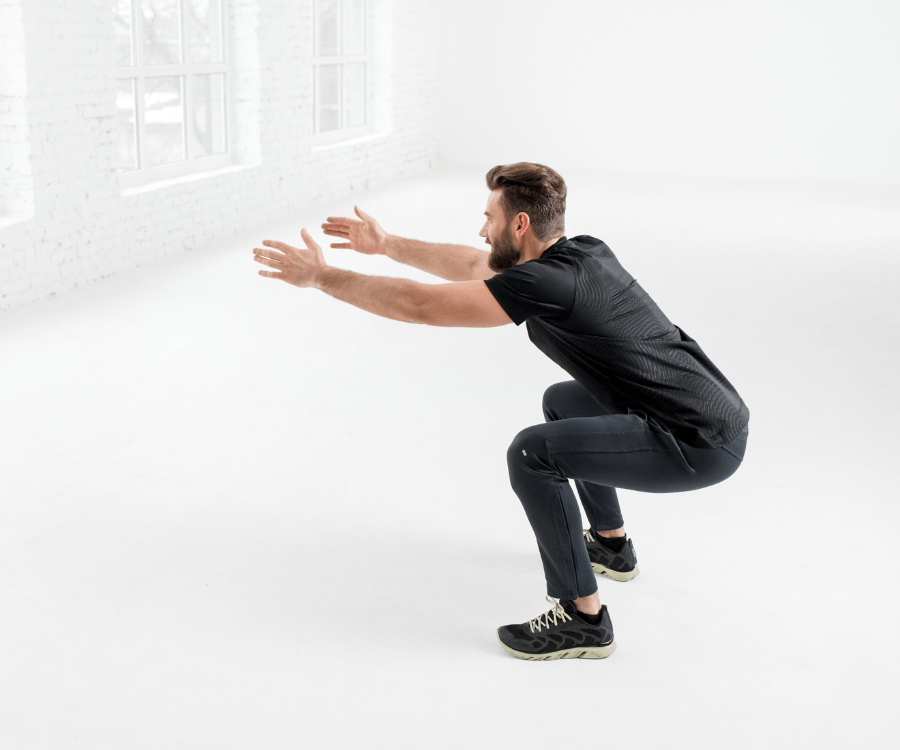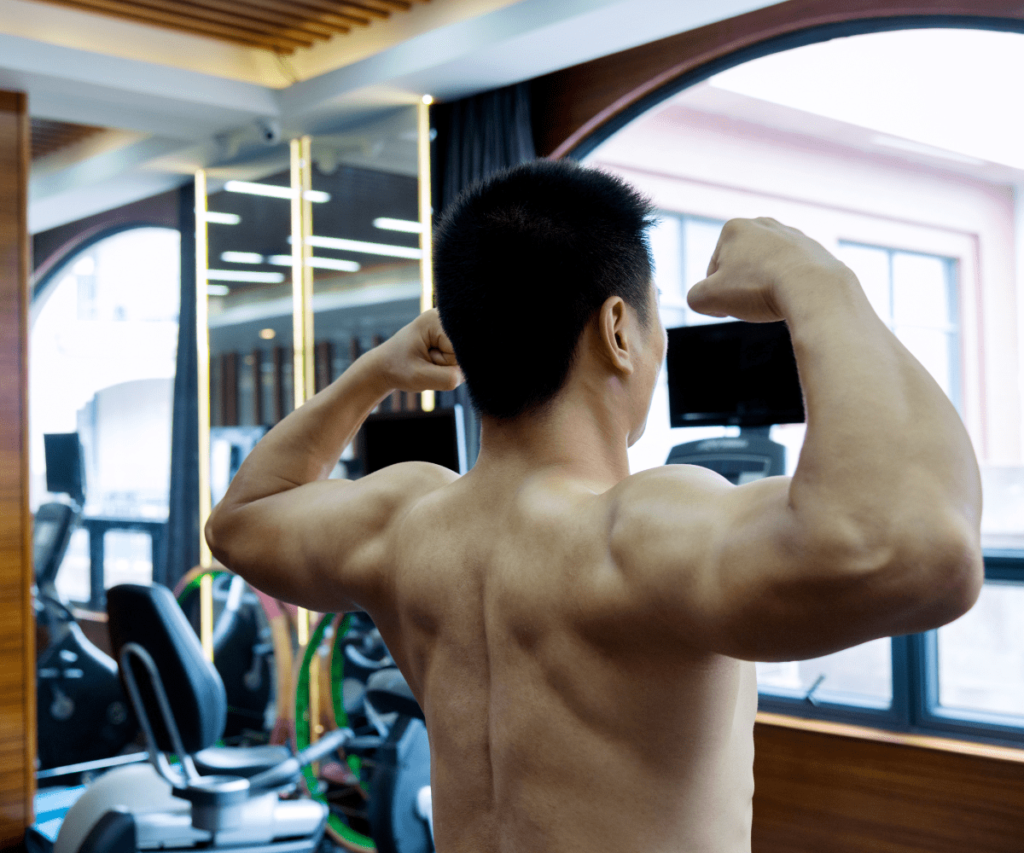What exactly are Hindu squats and should you be doing them? We take a look at this trending exercise and outline whether or not it’s worth adding into your fitness routine.

Reviewed by Brian Richards, CPT, CSCS. Last updated 16th December.

Key Takeaways
Hindu squats, also known as “Baithak squats”, are a type of bodyweight exercise that primarily targets the muscles in the legs and lower body. They are called “Hindu squats” because they were traditionally used by wrestlers in India as part of their training.
During a Hindu squat, you start in a standing position with your feet shoulder-width apart and your arms extended in front of you. You then squat down as low as you can go, keeping your feet flat on the ground and your back straight. As you come back up, you push through your heels and extend your arms overhead.
Hindu squats are a great exercise for improving lower body strength, endurance, and mobility. They work the quadriceps, hamstrings, glutes, and calves, as well as the core and lower back. They can also improve balance and coordination.
Muscles used during the Hindu squat
Hindu squats are a bodyweight exercise that primarily targets the muscles in the lower body, including:
- Quadriceps: These muscles, located at the front of the thigh, are responsible for extending the knee. Strong quadriceps are important for activities that involve leg extension.
- Hamstrings: These muscles, located at the back of the thigh, are responsible for flexing the knee and extending the hip. Strong hamstrings are important for activities that involve leg flexion.
- Glutes: The gluteal muscles, or glutes, are located in the buttocks and are responsible for extending the hip. Strong glutes are important for activities that involve hip extension.
- Calves: The calf muscles, located at the back of the lower leg, are responsible for plantar flexing the foot (pointing the toes down). Strong calves are important for activities that involve pushing off with the foot.
In addition to these muscles, Hindu squats also work the core and lower back muscles, which are important for maintaining stability and balance during movements.
How to perform Hindu Squats
This “ancient squat” is going to look and feel different than your traditional squat. While they share some of the basic movement mechanics, bending at the hips and knees, and returning to a fully straightened, extended position, there are also several key differences.
To perform the perfect Hindu Squat make sure to keep the motion smooth and controlled while following these steps:
- Start with your feet underneath your hips. This stance is much more narrow than your traditional squat.
- Begin squatting down with the weight in the balls of your feet, NOT in your heels. Allow your knees to pass over the front of your toes.
- As you continue to squat down, keep your core tight, spine straight, and eyes looking forwards. Swing your arms, with your fingers extended, behind you.
- Continue to lower yourself to the bottom of the squat, as deep as you can go without pain or falling, with the goal of touching the back of your hips to your heels.
- At the bottom of the squat you will start to swing your arms forwards, lightly brushing your fingertips against the ground next to your feet during this transition.
- Your arm swing will end with your arms straight out in front of you.
- Continue to keep your weight on the balls of your feet. Push yourself up from the bottom of the squat, using the strength of your legs and the momentum from your arm swing to return to the standing position. Make sure you fully extend your knees and hips as the top of the squat.
- Repeat for desired sets and reps.
However, performing the Hindu Squat is much more than ensuring you are moving your body properly, it is also about your breathing mechanics. In fact, the breathing mechanics during this type of squat is opposite of your traditional squat.
During the Hindu squat:
- Exhale on the descent, the downwards movement.
- Inhale on the ascent, the upwards movement.
- Some trainers even state that the Hindu Squats “are as much a deep breathing lung-builder as a leg builder.” If you cannot hear yourself breathing, you may be doing it wrong.
Benefits of Hindu Squats
There benefits of the Hindu Squat are endless, from training ancient Indian wrestlers to adding variety to your current workout routine, anyone is sure to benefit from these squats.
No Equipment Needed
First, this alternative to the traditional squat provides another body weight strengthening exercise to do at home. No equipment is needed to perform the Hindu Squat.
Works Arms as well as Legs
The number one benefit of this squat is the fact that it trains the arms, legs, and breath to work together to complete a functional, stable, and coordinated movement pattern.
Deep Knee Bend = Better VMO Activation
From a muscle activation and biomechanical standpoint, this type of squat that requires a deep knee bend with ankle plantar flexion (aka your heels off of the ground), challenges different parts of your body more than during the traditional squat.
While it is hard to find research, a lot of trainers report that the Hindu Squat also increases your quadriceps activation. Since this type of squat improves ankle mobility, one can squat deeper than in a traditional squat, allowing more knee bend, and therefore more eccentric control and activation of the quadriceps muscle.
Better Calf Activation
With the heels elevated, there is a significant increase in the gastrocnemius (calf) muscle activation.
Improved Ankle Mobility
Typically, if weightlifters have poor ankle mobility, they will elevate the heels in order to improve their squat form. So, if you are limited in your ankle mobility, Hindu Squats may actually be easier for you!
Plus, as your heels are raised, it is much easier to keep your torso upright, improving your form, and training your overall squat mechanics.
Cardio Fitness
Besides training a functional movement pattern and providing an alternative leg strengthening exercise, the Hindu Squat can also improve cardiovascular fitness. Typically, these squats are done quickly with several repetitions in a row.
No matter what your goal is, Hindu Squats will most likely help get you there.
Hindu Squats Vs Traditional Squats
As mentioned earlier, a few key differences between these two types of squats are:
The stance width
Hindu Squats- More narrow, with feet below hips
Traditional Squat- Feet at shoulder width
Weight placement
Hindu Squats- Weight on balls of feet
Traditional Squats- Weight on heels
Use of arms
Hindu Squats- Arms swing forwards and backwards to help coordinate the movement
Traditional squats- Arms stay in place
Breathing
Hindu Squat- Breathe out on the descent, and in on the ascent
Traditional Squat- Breathe in on the descent, and out on the ascent
Other differences
During the Hindu Squat, much more force, pressure, and work is being shifted forwards to the knees and toes. This challenges balance and coordination more so than your typical squat.
You are also able to squat much deeper during the Hindu Squat since the heels are elevated. This challenges your mobility and builds strength in deeper ranges of motion than the traditional squat.
Both squats are great, but it would be well worth your time to add Hindu Squats to your training program.
Summary
Anyone looking to improve their lower body strength and endurance can benefit from doing Hindu squats, as well as people looking to increase their mobility and flexibility.
They can be modified to suit different fitness levels by adjusting the number of reps and sets performed or by using a kettlebell or other weight to add resistance. It’s important to start with a manageable number of reps and gradually increase the intensity as you get stronger.
